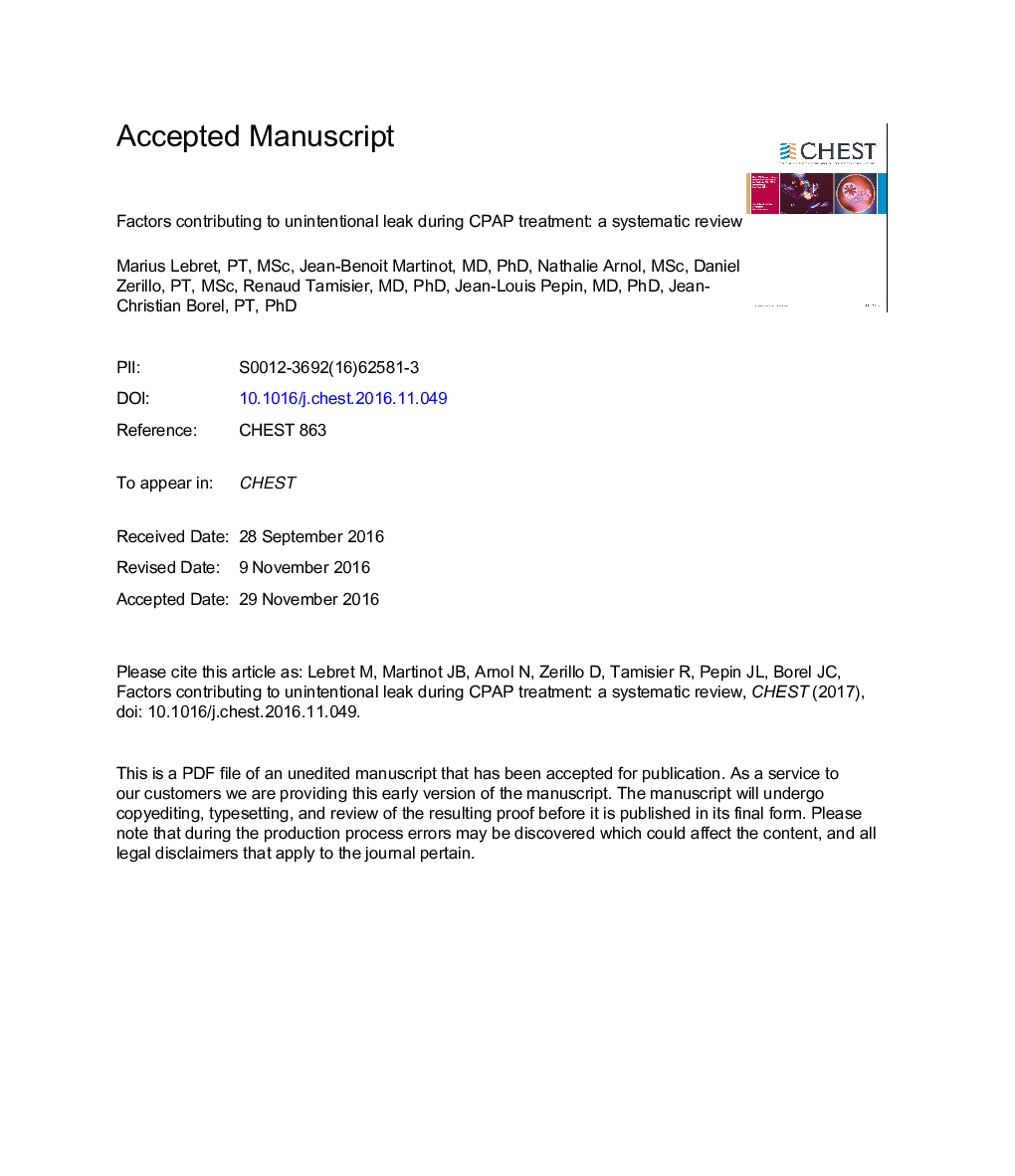| Article ID | Journal | Published Year | Pages | File Type |
|---|---|---|---|---|
| 5601012 | Chest | 2017 | 30 Pages |
Abstract
CPAP is the first-line treatment for moderate to severe OSA syndrome. Up to 25%Â of patients with OSA syndrome discontinue CPAP treatment due to side effects. Unintentional leakage and its associated annoying consequences are the most frequently reported adverse effects of CPAP. Successive technological improvements have not succeeded in addressing this issue. A systematic review was conducted (1) to assess the impact of different technological advances on unintentional leaks and (2) to determine if any patient characteristics have already been identified as determinants of unintentional leakage. No CPAP modality was superior to another in reducing unintentional leaks and, surprisingly, oronasal masks were associated with higher unintentional leaks. Nasal obstruction, older age, higher BMI, central fat distribution, and male sex might be associated with an increased risk of unintentional leakage. Such leaks remain an important problem. Further studies are needed to improve the understanding of underlying clinical factors so that patients at risk of unintentional leaks may be identified and individualized solutions applied.
Keywords
Related Topics
Health Sciences
Medicine and Dentistry
Cardiology and Cardiovascular Medicine
Authors
Marius PT, MSc, Jean-Benoit MD, PhD, Nathalie MSc, Daniel PT, MSc, Renaud MD, PhD, Jean-Louis MD, PhD, Jean-Christian PT, PhD,
